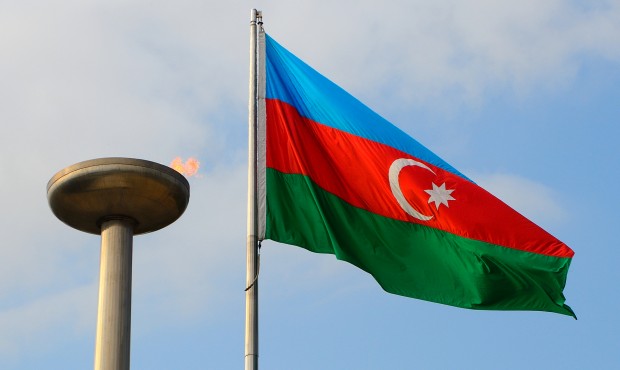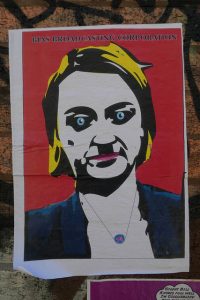28 Sep 2017 | Mapping Media Freedom, Media Freedom, News and features
[vc_row][vc_column][vc_column_text]

Dutch journalists launched a campaign to pressure advertisers into reconsidering advertising on sites that denigrate women.
Journalists are increasingly subjected to online harassment, but when the journalist is a woman misogynistic abuse quickly escalates into gender-based defamation and threats of sexual violence, according to a review of incidents reported to Index on Censorship’s Mapping Media Freedom project.
In the latest case, political editor Laura Kuenssberg, who works for the BBC, was provided with a security detail while she covered the Labour party conference in Brighton. Kuenssberg had been targeted with sexist abuse by individuals who were upset by what they saw as her anti-Labour and anti-Jeremy Corbyn bias.
“Sadly, Laura Kuenssberg’s experience is all too common across the 42 countries that Mapping Media Freedom monitors. Women are often targeted with threats of death and rape. As a society, we only hear about the most high-profile cases, which obscures the fact that this type of misogynistic intimidation is a widespread and pernicious obstacle to the performance of journalists’ professional duties,” Hannah Machlin, project manager at Index on Censorship’s Mapping Media Freedom project, said.
In July, Poland’s state-controlled news channel TVP INFO ran a critical piece about Dorota Bawołek, Brussels correspondent for Polsat, a private Polish TV channel, which led to online harassment.
Bawołek reported that she had received hundreds of insulting messages on social media after TVP INFO accused her of asking provocative questions with intent “to harm Poland”. In the messages Bawołek was called a “prostitute”, “anti-Polish manipulator”, “stupid” and “a snitch”.
In May, there were two cases that exemplify the seriousness of the threats that women journalists receive online.
In Ukraine, journalist Darina Synytska was threatened with rape and kidnapping on Facebook. Responding to a post in which Andriy Knyazev, a resident of Poltava, accused Synytska of passing the personal information of activists, three Facebook users — Ruslan Zarubin, Vitaliy Soloniy, Danylo Plakhov — left threatening comments. Other users were urged to “disappear” the journalist. The journalist union for the region issued a statement of support and solidarity of Synytska, and pledged to monitor the police investigation of the incident. The threats followed Synytska’s investigation of a conflict over a construction site in the centre of Poltava.
In The Netherlands, Loes Reijmer faced a storm of sexual harassment including threats of rape after a popular right-wing blog published her photo with the text: “Would you do her?” Reijmer had previously published critical columns about the controversial site GeenStijl, which has been routinely criticised for sexist content.
The GeenStijl post targeting Reijmer resulted in a public call on advertisers to stop advertising with the outlet backed by an open letter signed by over 100 women from the media and entertainment industries.
“Combating online threats against female journalists will remain at the top of my agenda as it is an integral part of the safety of journalists. There can be no freedom of the media without safety,” said the OSCE Representative on Freedom of the Media Harlem Désir.
“These cases highlight the seriousness of the threats women journalists face in the course of their work. These online campaigns are intended to silence and intimidate women who write critically. The solidarity of unions and a wider community reaction has been crucial in communicating that threats of sexual violence or otherwise are unacceptable,” Machlin said.[/vc_column_text][/vc_column][/vc_row][vc_row][vc_column][vc_basic_grid post_type=”post” max_items=”4″ element_width=”6″ grid_id=”vc_gid:1506602857542-6ca50442-57e4-6″ taxonomies=”8189, 7132″][/vc_column][/vc_row]
25 Sep 2017 | Mapping Media Freedom, media freedom featured, News and features, Sweden
[vc_row][vc_column][vc_column_text]

Tess Asplund faces protesters from the Nordic Resistance Movement in Borlänge, Sweden, in May 2016
In exactly a year from now, Sweden will go to the polls to elect a new government, and it seems certain that the far-right Sweden Democrats party will further cement their place in parliament, and possibly even support a conservative coalition government.
The rise of the party – and the normalisation of their nationalist agenda – over the past decade has been accompanied by a more toxic fringe with clearer ties to extra-parliamentary far-right and neo-Nazi-movements who have identified established journalists as a barrier to the re-assertion of traditional Swedish values. Buoyed by the success of populism in mainstream politics, neo-Nazi groups such as the Nordic Resistance Movement (NMR) have become more visible and the NMR will this year protest outside of the Gothenburg Book Fair, a hub for Swedish publishing and journalism which symbolises the “cultural Marxism” the far right assert has ruined the country.
The sight of Nordic white supremacists rallying at such a huge cultural event is though merely the tip of an invisible iceberg of intimidation and opposition to Sweden’s cultural and journalistic community by the far right.
A survey by Swedish public TV’s Kulturnyheter editorial desk of five major Swedish media outlets found that the overall level of threats to journalists was increasing, as were the amount of incidents filed with the police by journalists or their employers. Attacks range from low-level intimidation and character assassination on social media to direct and persistent death threats. A now-removed website recently named a list of journalists it deemed traitors – alongside politicians and other public figures – with a call for violence against them.
The relationship between the Sweden Democrats and the networks that seek to intimidate journalists is not straightforward, but party figures have been connected to the site Granskning Sverige for example. Granskning Sverige was implicated in misinformation campaigns against journalists through selective editing of interviews, and party figures shared Granskning Sveriges content whilst party spokesperson Adam Martinnen gave his approval of the site in an interview.
When the newspaper Expressen revealed the names of the people behind Granskning Sverige, its editor in chief was visited in their home by two supporters of the site.
A common belief amongst conservatives and the far right is that journalism is a hotbed of far-left politics. Mats Qviberg, a former financier who purchased and then sold a share in the Metro newspaper, recently said of his own staff that there were “Stalinists” who needed to be “cleaned out”.
Lisa Bjurwald, a former journalist with the Aftonbladet tabloid newspaper who has authored several books on right-wing extremism, has taken a leading role in discussions regarding far-right threats to journalists. Bjurwald and her colleague Lisa Röstlund both received threats from a 55-year old anonymous emailer last summer. They managed to identify the harasser and testified against her in court in May. The emails contain threats, including: “I would cut you up so that you can’t produce any more bastard kids.” And “It would be wonderful to see your Leninist whore throats cut.”
Her misgivings are backed up by statistics. A recent survey by Gothenburg’s school of journalism, media and communication run in coordination with the Swedish Journalism Union concluded that threats were an everyday reality for a majority of Swedish journalists. Thirty percent had been directly threatened and two-thirds had been the subject of derisory comments or assaults on their integrity. Thirty percent also said they avoided tackling controversial subjects in order to avoid harassment.
In July the Swedish minister for Culture and Democracy, Alice Bah Kuhnke, unveiled a strategy spearheaded by the Fojo media institute at Sweden’s Linnaeus University to protect journalists and tackle threats and intimidation, aiming to support the location and prosecution of harassers or those posing a danger to journalists, elected officials and artists.
“The problems with hate and threats to journalists have escalated in recent years and constitute a considerable threat to Sweden’s democracy. In their latest report, the Swedish Civil Contingencies agency suggested that an inquiry was needed to increase the legal protection for journalists reflective of the seriousness of threatening and harassment to representatives of the media industry. That same report says that threats and provocation of journalists are particularly serious because they are working in the service of democracy,” says Kersti Forsberg, Fojo’s director.
Worryingly for a profession built on democratic values, another significant element in the Swedish picture is declining trust in the media among the Swedish population. A book and report by researchers at Gothenburg found that trust in the media fell noticeably the further right voters identified on the political spectrum, peaking amongst supporters of far-right politics. Even more noticeably, the study showed that 54% of those surveyed felt the media was not reporting on the negative social consequences of immigration in Sweden.
Rather than merely being the work of a small group of individuals, opposition to journalists and intimidation is now a relatively mainstream undertaking when seen in the context of mistrust of journalistic institutions.
Swedish journalism, which has often been a benchmark for institutional strength and which takes its role as an important organ of society seriously, faces new threats, and the establishment of populist right politics as a permanent fixture has put it under more pressure than ever. Rather than merely being a target for individual threats and harassment, journalists in Sweden are realising that significant sections of society see them not as guarantors of democracy but as a partisan threat which needs to be neutralised.[/vc_column_text][/vc_column][/vc_row][vc_row][vc_column][vc_basic_grid post_type=”post” max_items=”4″ element_width=”6″ grid_id=”vc_gid:1506333367029-0a79f09b-a789-1″ taxonomies=”9008, 6564″][/vc_column][/vc_row]
22 Sep 2017 | Azerbaijan, Azerbaijan News, Mapping Media Freedom, media freedom featured, News and features
[vc_row][vc_column][vc_column_text]
The government of Azerbaijan is waging a war on independent journalism within the country.
“This has been the case for years now,” says Arzu Geybulla, Index on Censorship’s Mapping Media Freedom correspondent for Azerbaijan. “Most of the journalists, editors, bloggers who are behind bars are there on bogus charges of hooliganism, tax evasion, slander, abuse of power, illegal entrepreneurship.”
The government has recently taken two of its cases internationally for the first time. This may change the way international reporters critical of Azerbaijan’s government cover the country in their own media.
Thorbjørn Jagland, the secretary general of the Council of Europe, has called on the authorities in the country “to respect the spirit of the country’s cooperation with the Council of Europe and to fully abide by its commitments under the European Convention on Human Rights in order to avoid yet another case of unjust deprivation of liberty which has no place in a democratic society”.
Here are some of the new cases and developments in the past month where Azerbaijani officials target the media domestically and abroad.
10 September, 2017 ‒ The regional reporter for opposition Azadliq newspaper Ziya Asadli was given a three-year sentence by a Bilasuvar region court after being charged with hooliganism.
In April 2017 Asadli reported that he was approached and pressured by police after reporting on local protests. After publishing these pieces, authorities accused Asadli of engaging in hooliganism at a local tea house.
During the incident at the tea house, he notified the police and learned that there was a complaint against him. He is denying these accusations, explaining that it was he who was attacked.
Azadliq Radio is the Azerbaijani service for Radio Free Europe/Radio Liberty.
5 September, 2017 ‒ French journalists Elise Lucet and Laurent Richard are being sued for defamation by the government of Azerbaijan. The two journalists are facing these charges after describing Azerbaijan as a dictatorship.
“This is the first time our government has engaged in an action of this kind and while it is hard to make any concrete projections, I suspect this may set the tone for future international reporters critical of the authorities and the language they use,” Geybulla said. “Clearly the authorities in Baku are very sensitive to the kind of language used describing them in international coverage.
A French court will make a ruling on 7 November 2017.[/vc_column_text][/vc_column][/vc_row][vc_row][vc_column][vc_separator][vc_custom_heading text=”Media freedom is under threat worldwide. Journalists are threatened, jailed and even killed simply for doing their job.” font_container=”tag:h3|text_align:left” use_theme_fonts=”yes” link=”url:https%3A%2F%2Fwww.indexoncensorship.org%2Fcampaigns%2Fpress-regulation%2F|||”][vc_row_inner][vc_column_inner width=”1/2″][vc_column_text]Index on Censorship monitors media freedom in Azerbaijan and 41 other European area nations.
As of 21/9/2017, there were 70 verified violations of press freedom associated with Azerbaijan in the Mapping Media Freedom database.[/vc_column_text][/vc_column_inner][vc_column_inner width=”1/2″][vc_column_text]Index on Censorship campaigns against laws that stifle journalists’ work. We also publish an award-winning magazine featuring work by and about censored journalists. Support our work today.[/vc_column_text][/vc_column_inner][/vc_row_inner][vc_separator][/vc_column][/vc_row][vc_row][vc_column][vc_column_text]
11 September, 2017 ‒ Russian-Israeli blogger Alexander Lapshin was released by authorities following a pardon for Azerbaijan President Aliyev.
Lapshin is a Moscow-based writer of a Russian-language travel blog and was wanted in Azerbaijan both for visiting the disputed region of Nagorno-Karabakh and for criticising Azerbaijani policies.
On 15 December 2016, Lapshin was detained in Minsk on an extradition request from Azerbaijan.
On 20 January 2017, the General Prosecutor’s Office of Belarus ruled to extradite Lapshin. One week later, his lawyer made an appeal to the Higher Court of Belarus. If extradited, the criminal case filed in Azerbaijan, if convicted, can lead to a prison sentence from five to eight years.
According to the Azadliq Radio, Lapshin attempted to commit suicide a day before his pardon fearing the extension of his extradition case. The pardoning means that his three-year sentence was commuted by the authorities.
Lapshin holds Russian, Ukrainian and Israeli citizenship, and will instead be extradited back to Israel.
11 September, 2017 ‒ A court has freed Mehman Aliyev, the director of independent news agency Turan, from pretrial detention and has now been placed under a conditional release.
On 24 August 2017 Aliyev was detained by Azerbaijani authorities on tax evasion charges. It was reported by Azadliq Radio that the next day he was sentenced to three months in pretrial detention. It was also reported that Aliyev was questioned for eight hours the day before his detention.
Aliyev has also been charged with carrying out “illegal entrepreneurship activities” which carries with it at least seven years sentence. He now faces three charges in total.
“The Council of Europe is working closely with the authorities in Azerbaijan on reforms intended to soften the punishment system and avoid unnecessarily harsh sentences and detentions whenever possible – for instance, in cases when the person who is detained does not threaten the security of the state or its citizens,” announced Secretary General of the Council of Europe Thorbjørn Jagland the day after the arrest. “These changes are a part of a presidential initiative that Azerbaijani officials recently reported to the Committee of Ministers as being on the point of adoption.”
Aliyev’s news agency Turan announced that it will be suspending its work temporarily. The tax probe launched against the agency resulted in the closing of its bank accounts, which has led to its forced temporary closure. On 15 September 2017 the official tax evasion charges were dropped, but the company’s bank accounts remain frozen.
The conditional release states that Aliyev is responsible for checking in regularly to the police and notifying them if he leaves the city of Baku.
In an interview with Azadliq Radio, Aliyev’s lawyer Fuad Agayev stated that there has been no changes to the charges brought against his client.[/vc_column_text][/vc_column][/vc_row][vc_row][vc_column][vc_basic_grid post_type=”post” max_items=”4″ element_width=”6″ grid_id=”vc_gid:1506001163566-c20aafba-9c85-8″ taxonomies=”6564″][/vc_column][/vc_row]
20 Sep 2017 | Campaigns -- Featured, Press Releases
 Index on Censorship’s database tracking violations of press freedom recorded 571 verified threats and limitations to media freedom during the first two quarters of 2017.
Index on Censorship’s database tracking violations of press freedom recorded 571 verified threats and limitations to media freedom during the first two quarters of 2017.
During the first six months of the year: three journalists were murdered in Russia; 155 media workers were detained or arrested; 78 journalists were assaulted; 188 incidents of intimidation, which includes psychological abuse, sexual harassment, trolling/cyberbullying and defamation, were documented; 91 criminal charges and civil lawsuits were filed; journalists and media outlets were blocked from reporting 91 times; 55 legal measures were passed that could curtail press freedom; and 43 pieces of content were censored or altered.
“The incidents reported to the Mapping Media Freedom in the first half of 2017 tell us that the task of keeping the public informed is becoming much harder and more dangerous for journalists. Even in countries with a tradition of press freedom journalists have been harassed and targeted by actors from across the political spectrum. Governments and law enforcement must redouble efforts to battle impunity and ensure fair treatment of journalists,” Hannah Machlin, Mapping Media Freedom project manager, said.
Q1 2017
During the first quarter the MMF database registered several trends that can be recognised as acute challenges to media freedom. A total of 299 incidents were reported to the project by MMF correspondents and other journalists between 1 January and 31 March 2017.
Some European governments clearly interfered with media pluralism. Other governments harassed, intimidated and detained journalists. The net effect of these interventions have been to debase and devalue the work of the press and undermine a basic foundation of democracy.
Throughout Q1: one journalist was murdered; 42 incidents of assault were confirmed; there were 89 verified reports of intimidation; media professionals were detained in 69 incidents; 38 criminal charges and civil lawsuits were filed; and journalists were barred from reporting in 54 verified incidents.
The full Q2 report is available on the web or in a combined Q1/Q2 PDF.
Q2 2017
The crackdown on media freedom throughout Europe — even within those countries perceived to be more democratic — continued in Q2 2017. A total of 272 incidents were reported to the project by MMF correspondents and other journalists between 1 April and 30 June 2017.
While the number of reports recorded during the second quarter declined nearly 10 per cent from the first quarter, this does not indicate an improvement in the overall state of media freedom. The situation for journalists across Europe remained extremely concerning. For example, the number of arrests decreased during the quarter, but hundreds of journalists were in detention or were forced into exile. In addition, based on the severity of the second quarter reports, inhumane treatment of media workers actually increased.
Throughout Q2: two journalists were killed; 36 incidents of physical assault and injury were reported; 53 criminal charges and civil lawsuits were filed; 99 instances of intimidation, which includes psychological abuse, sexual harassment, trolling/cyberbullying and defamation, took place; journalists were blocked from covering stories 54 times; 20 legal measures were passed that curtail press freedom; and 19 works were censored/altered by the state or editorial teams.
The full Q2 report is available on the web or in a combined Q1/Q2 PDF.
For more information, please contact:
For further information, please contact Hannah Machlin, project manager, Mapping Media Freedom on [email protected]
About Mapping Media Freedom
Mapping Media Freedom – an Index on Censorship-lead project with partner European Federation of Journalists and Turkey-based P24, Platform for Independent Journalism, partially funded by the European Commission – covers 42 countries, including all EU member states, plus Bosnia, Iceland, Kosovo, Macedonia, Montenegro, Norway, Serbia, Turkey, Albania along with Ukraine, Belarus and Russia and Azerbaijan. The platform was launched in May 2014 and has recorded over 3,300 incidents threatening media freedom by the end of Q2 2017.
Search reported incidents throughout Europe at https://mappingmediafreedom.org.





 Index on Censorship’s database tracking violations of press freedom recorded 571 verified threats and limitations to media freedom during the first two quarters of 2017.
Index on Censorship’s database tracking violations of press freedom recorded 571 verified threats and limitations to media freedom during the first two quarters of 2017.